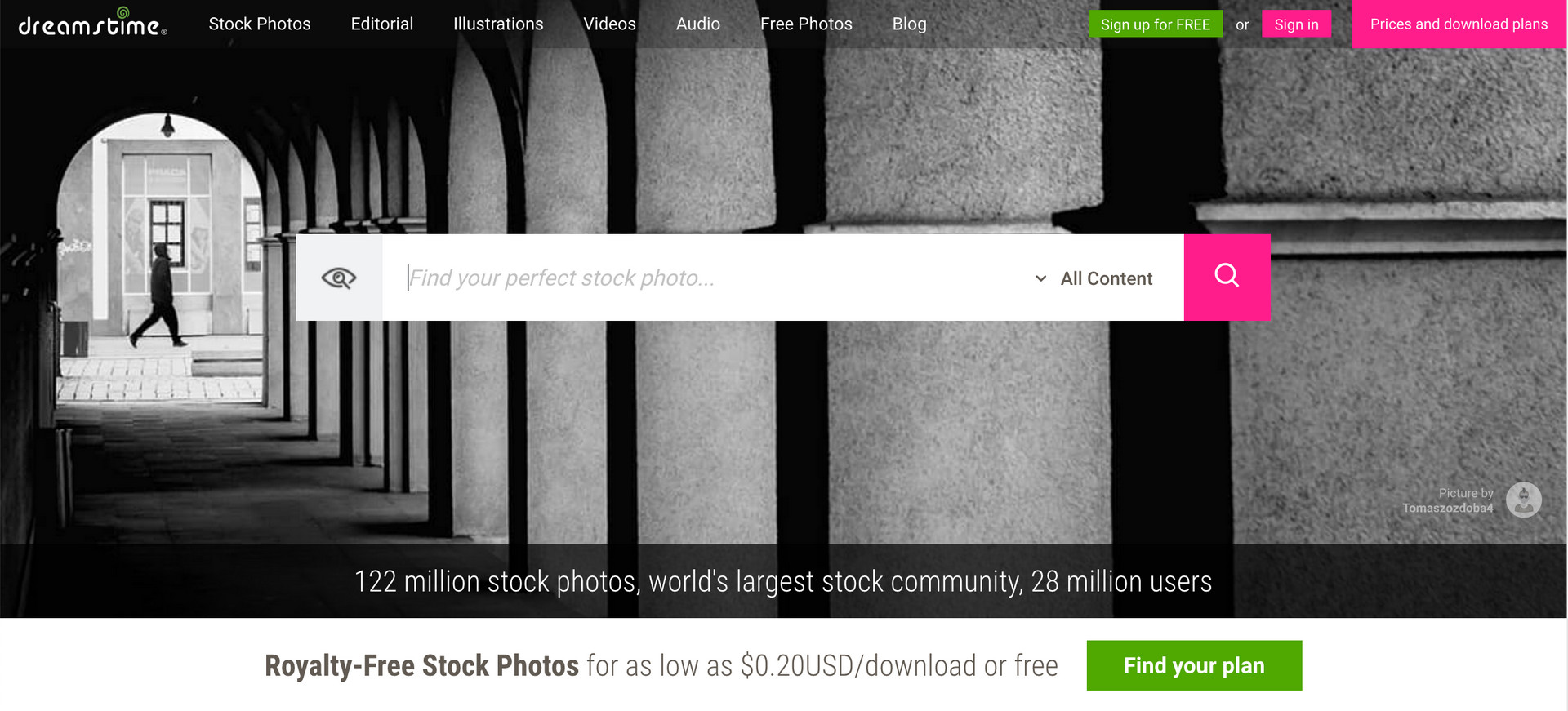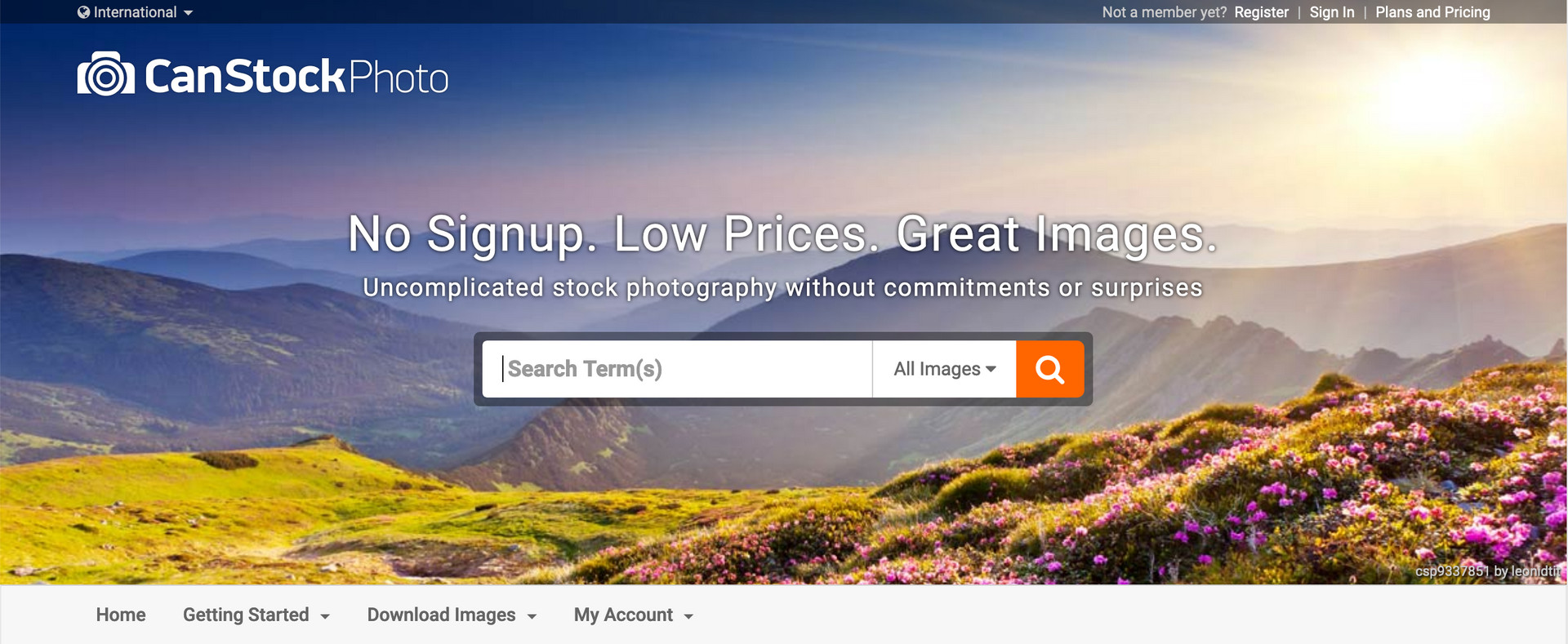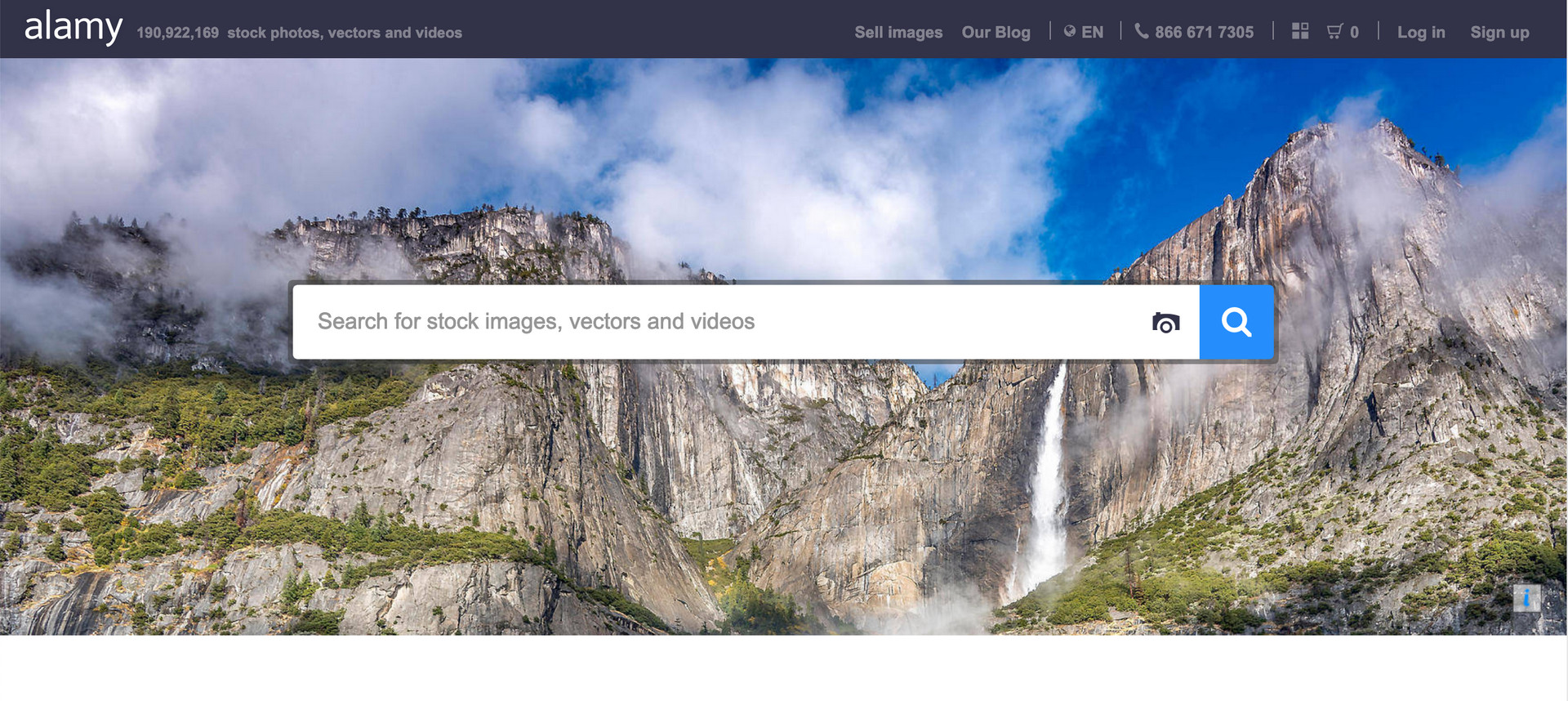Pond5
Pond5 is a popular microstock for videographers, founded in 2006. Now they expanded to sell other media types like photos, music and 3D models, but their primary focus was always on video. They feature 17 million clips, almost a million soundtracks and 26 million stock images.
Pond5 is different from other microstocks because you can set your own price for assets and they pay 50% royalties from that price. This makes it a lucrative opportunity for contributors also given that you don’t need to pass any exam. Minimum payout amount is $25 which is also less than many others. One of the shortcomings of Pond5 is that they don’t feature an extended license that costs more money, as used for example on Shutterstock.
They allow you to upload files via FTP or via their website. Other important resources to mention would be data & trends analytics and blog. You will not find advanced image search engine there, but you have basic filtering and keyword search. Pond5 is one of the most popular microstocks if you upload video, so make sure to register there if you do.
Dreamstime
Dreamstime is one of the oldest microstocks, founded in 2000 in US. Today they host 122 million stock photos, vectors and videos. Dreamstime has never been a leader of the market, but they maintained their position for a long time being relatively stable. Also they feature the biggest number of licensing options for customers: royalty free, extended, editorial and full copyright.
Today Dreamstime sells photos, vectors, illustrations, video and audio files. They have exclusivity program, but their default rates are not that bad as those of iStock. They split earning in tiers depending on lifetime downloads, starting from 25% and up to 45% for non-exclusive assets and from 27.5% to 49.5% for exclusive assets. If you are Dreamstime exclusive user, you earn stable 60% from sales.
Dreamstime upload system was far from usable, however they improved it lately. Even though it is still not a match to Shutterstock or Depositphotos, there’s a hope it will improve even better. Together with upload system, they released automatic image classification, keywords suggestions and smart cropping. Dreamstime has its own blog which is definitely worth checking out.
Creative Market
Creative Market is not a microstock, but it is a unique marketplace that is very interesting for microstock contributors too. It was founded in 2011 in the US and had few rounds of raising money. This marketplace allows every community member to open their own “shop” and sell digital assets that include photos, graphics, templates, web themes, fonts and add-ons. Today they feature 4 million of such items on sale.
Sellers of the digital goods can set their own prices and retain 60% of the income (this dropped in 2019 from 70%). Creative Market supports few licensing options: Standard and Extended License which is similar to microstock licenses but with own quirks. There’s no exam or approval process, all members are fully responsible for maintaining their own shop. In theory you can sell anything there, but assets sold on Creative Market do not include typical microstock content. Every product sold is not just a file, it’s a package with nice preview, inner assets and even short history. Contributors cannot just upload their artwork with metadata and forget it, they have to prepare it specifically for sale on Creative Market.
Selling on Creative Market is definitely different from selling on microstocks. One of the unique things is a “free goods” section that can feature your artwork. There’s a strong competition to be included in this section, because featuring there can boost popularity of your shop with other products significantly. Also, unlike microstocks, your customers can actually message you and in fact they frequently do asking if you can tailor your artwork for their needs.
You can find inspiration and useful insights on Creative Market Blog.
CanStockPhoto
CanStockPhoto is also one of the older microstock agencies founded back in 2004. Today this microstock offers cheaper assets than some other microstocks and it’s selling point is ability to license assets without membership subscription.
CanStockPhoto requires you to pass an exam with your 3 best images to start selling there. They accept photos, vectors and videos and pay $0.25 per subscription download and $1-5 per on-demand download. You can find more details on their payout schedule page.
They offer FTP server for upload, but their web interface still has room for improvement. They have image search, but it is quite basic and only support keywords. Good thing is that they even process metadata in video files so you don’t have to provide it separately, like for example, on Shutterstock. Even though CanStockPhoto website does not have modern look and feel and earnings are far not very exciting, the submission process is so easy, that it doesn’t take much time to upload there.
Alamy
Alamy, being founded in 1999 is one of the dinosaurs of microstock industry together with iStock. Also it’s one of the biggest agencies with 190 million photos, vectors and videos and they payed contributors around $200 million dollars since start. Except of standard royalty-free license, they also provide Rights Managed license and lately they became somewhat famous for providing editorial photos to customers.
Alamy sells photo, vector and videos and you have to pass an exam with 3 artworks in order to become a contributor. They pay 40% for non-exclusive authors and 50% for exclusive authors which is more than other microstocks. Minimum payment amount is $50.
Alamy provides FTP for artwork upload but they have the most weird setup from other sites (separate directories for archival images, live news etc.). Also they created Stockimo mobile app that allows you to upload your iPhone photos right to Alamy or you can use their web uploader. They are also actively blogging on their website so make sure to check that out.











0 Comments